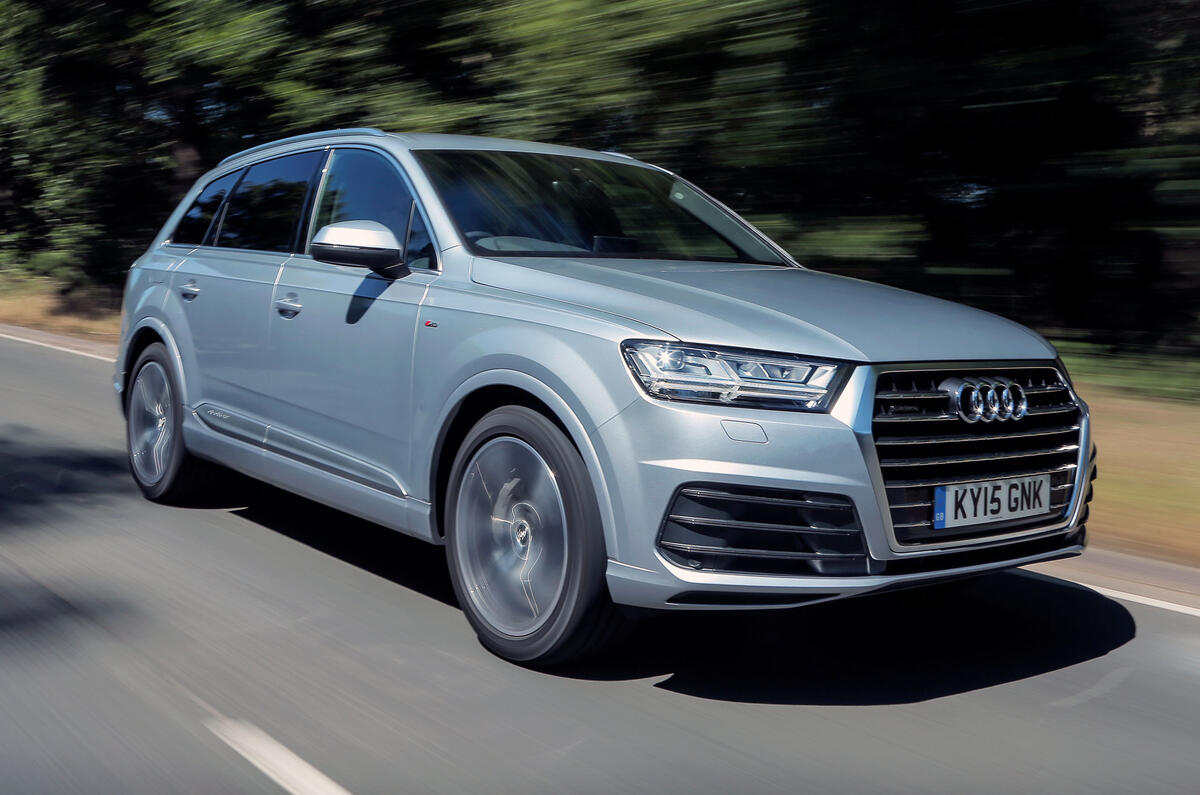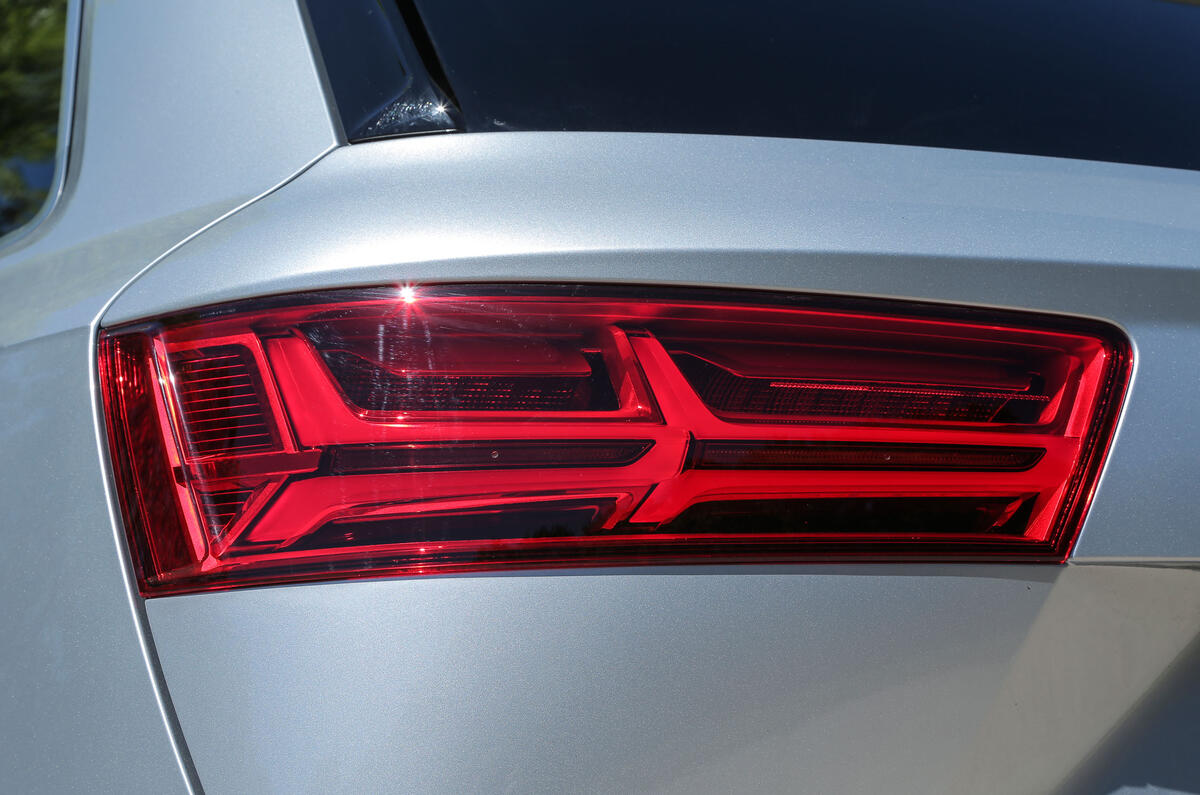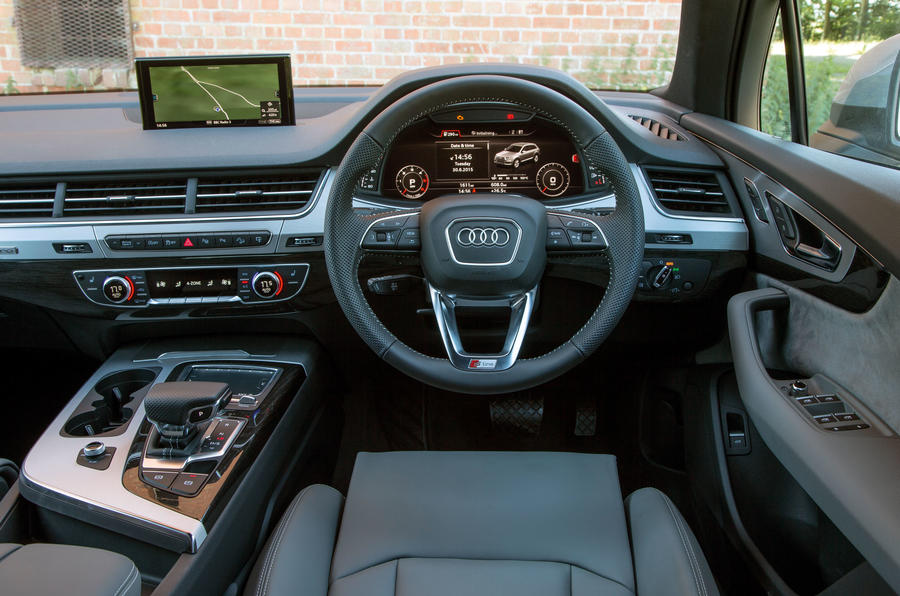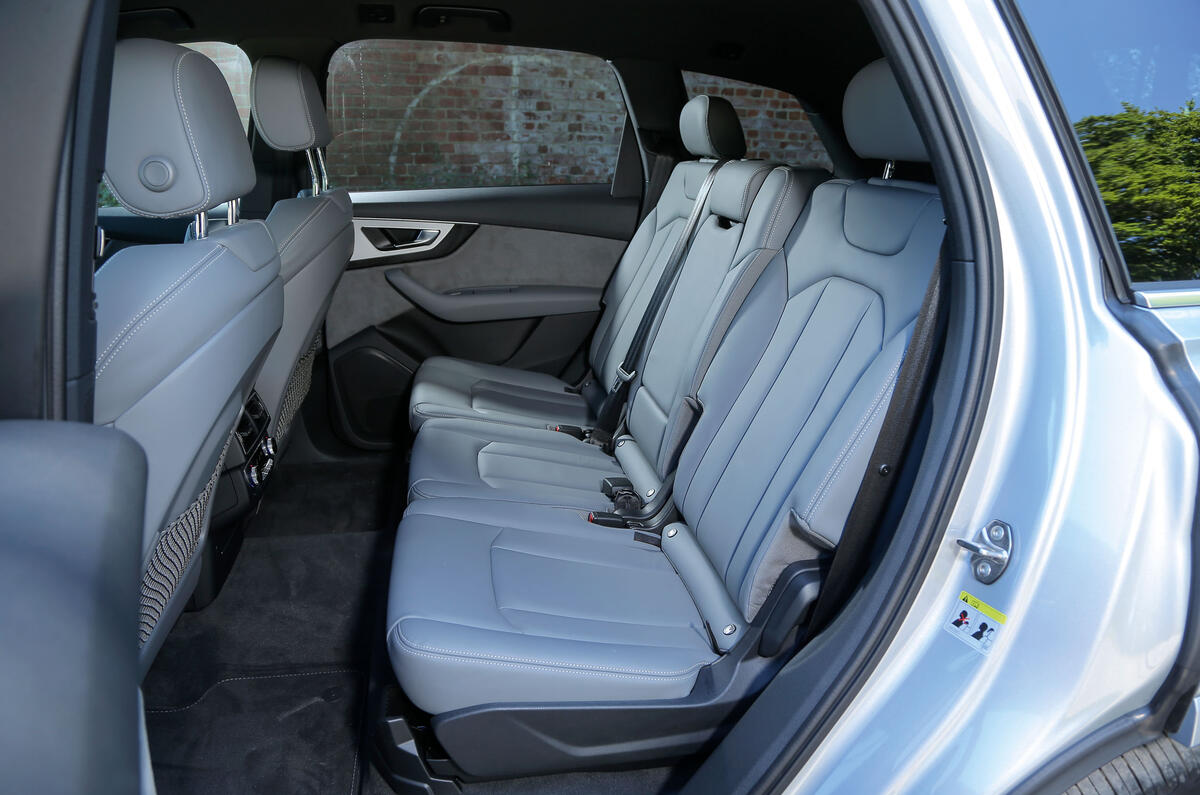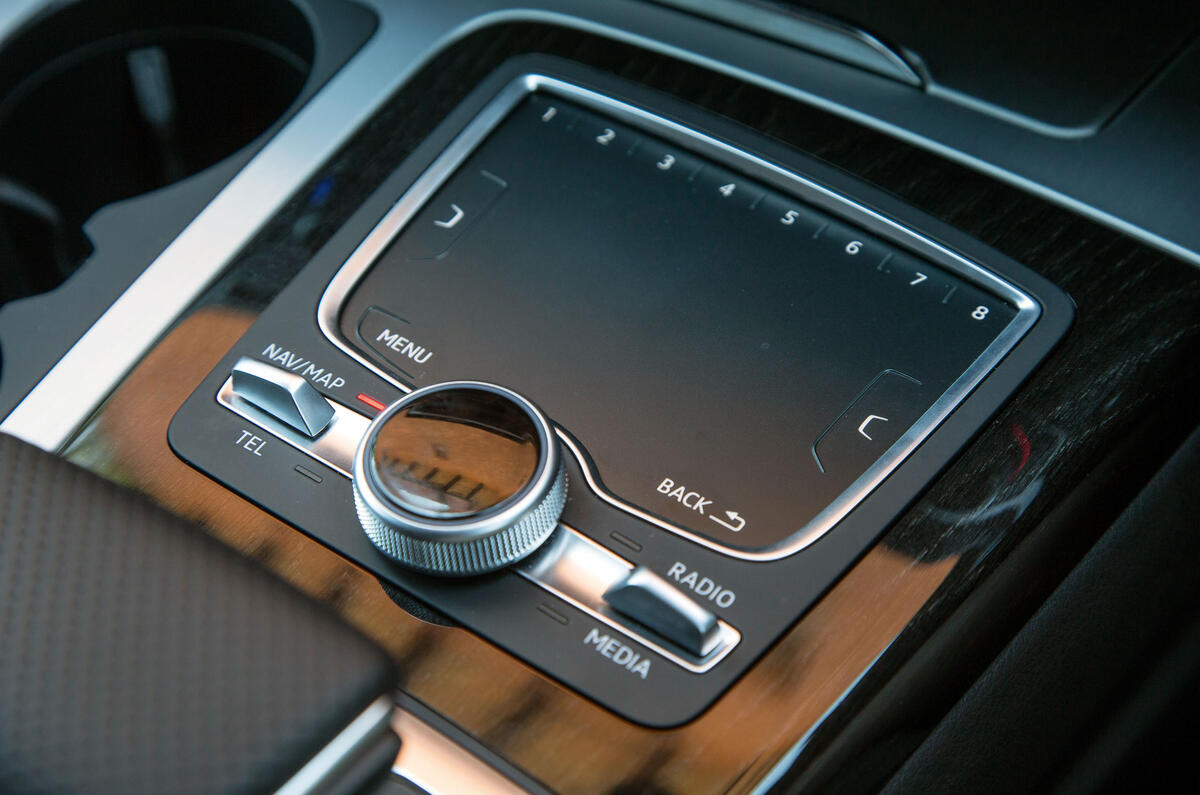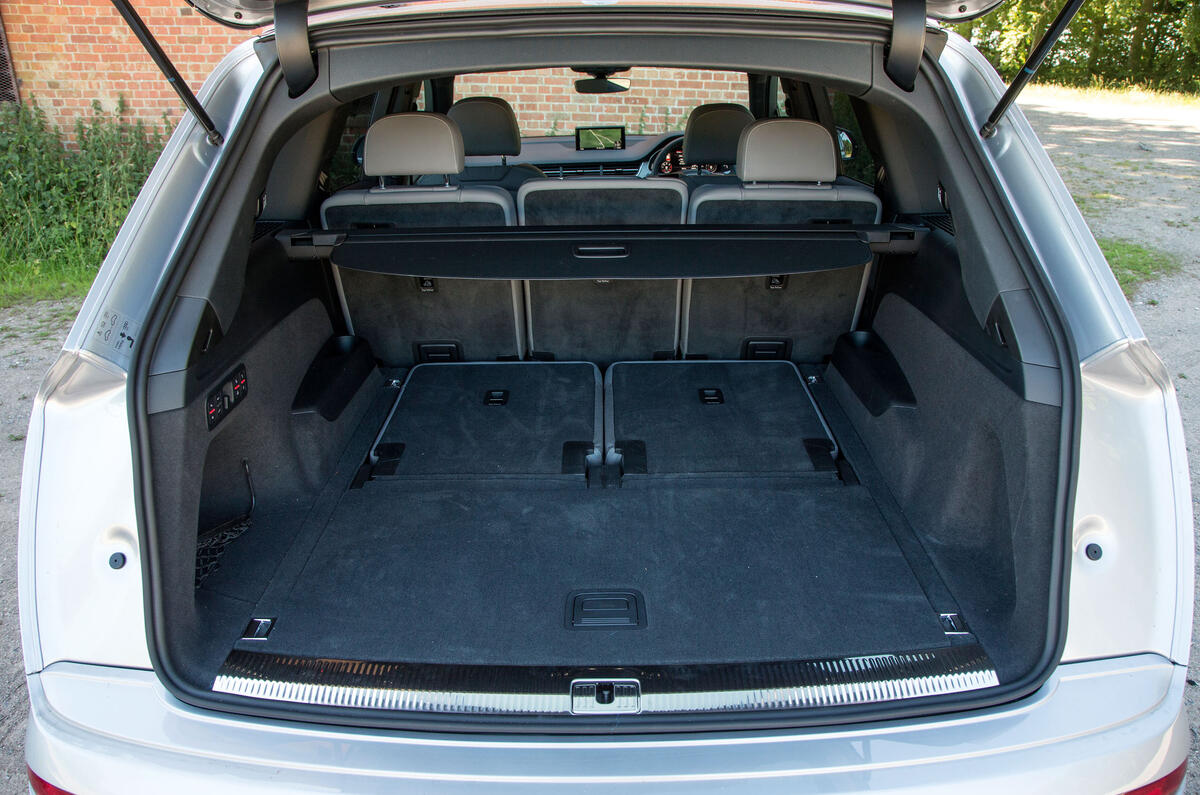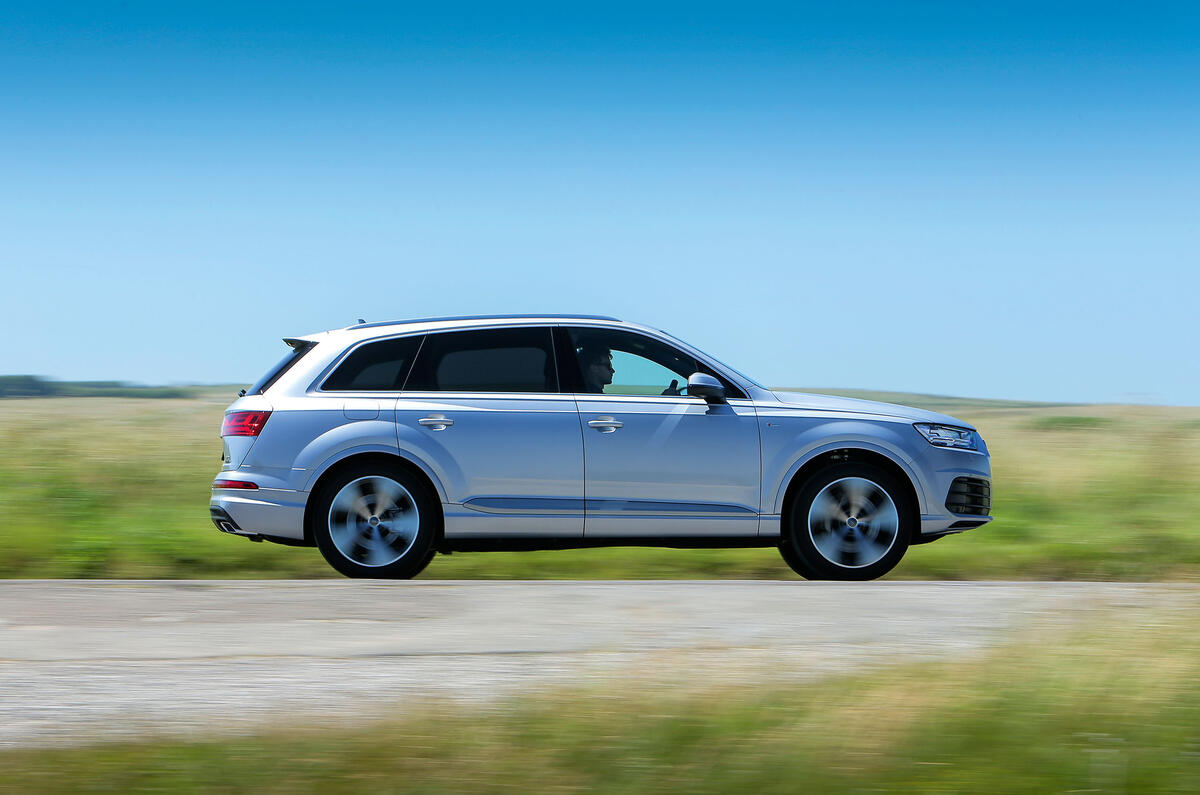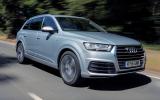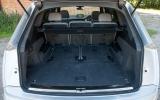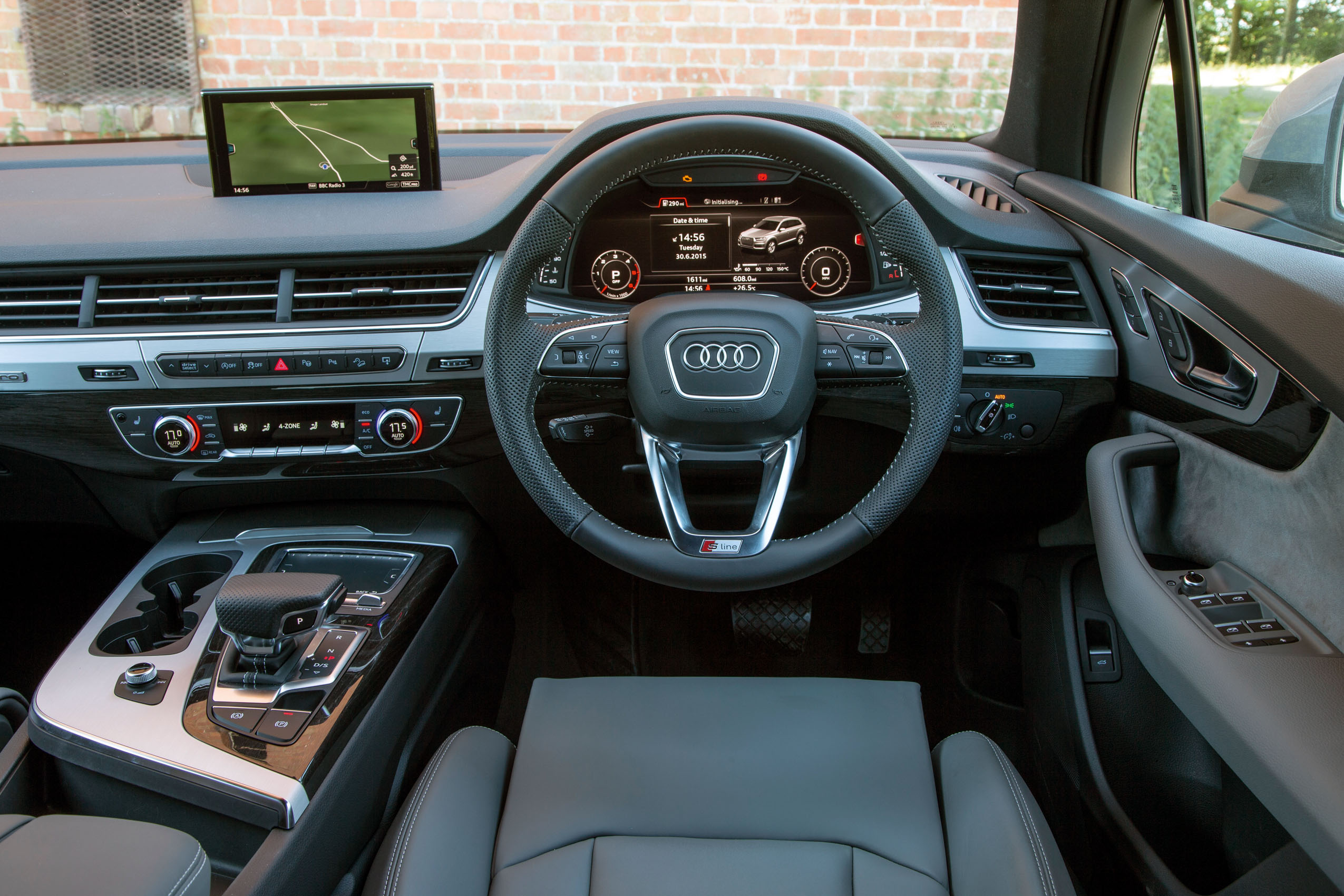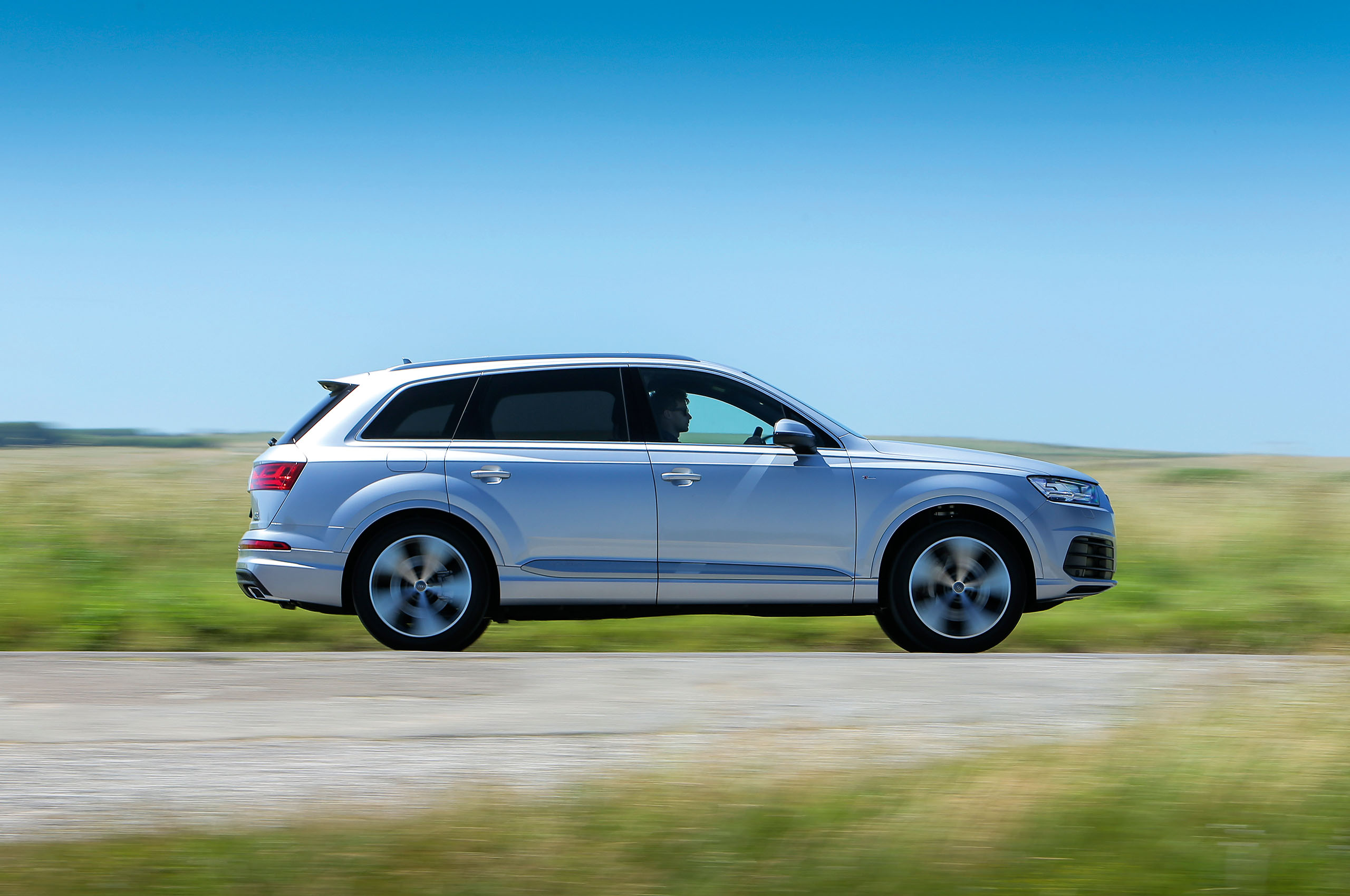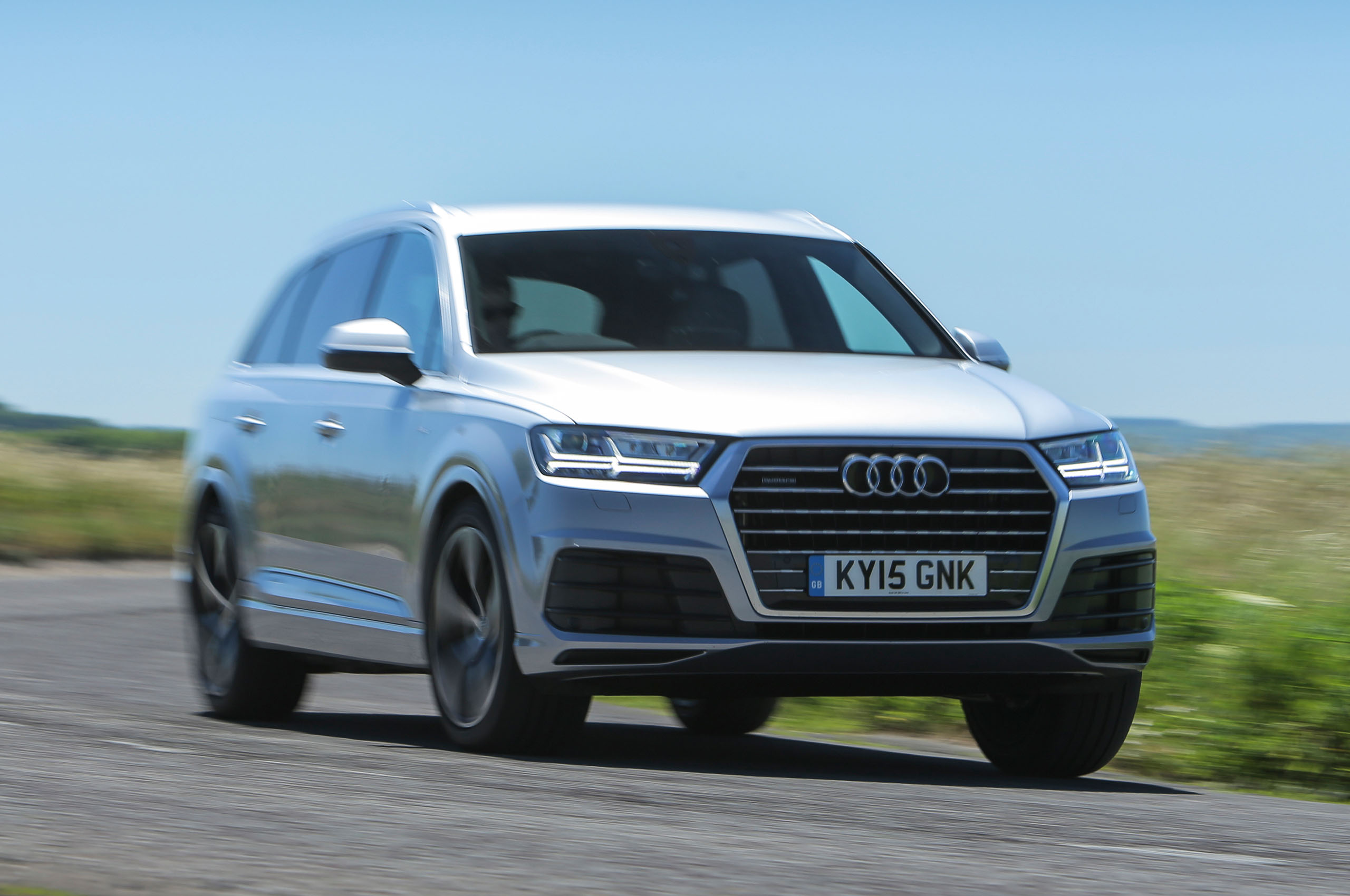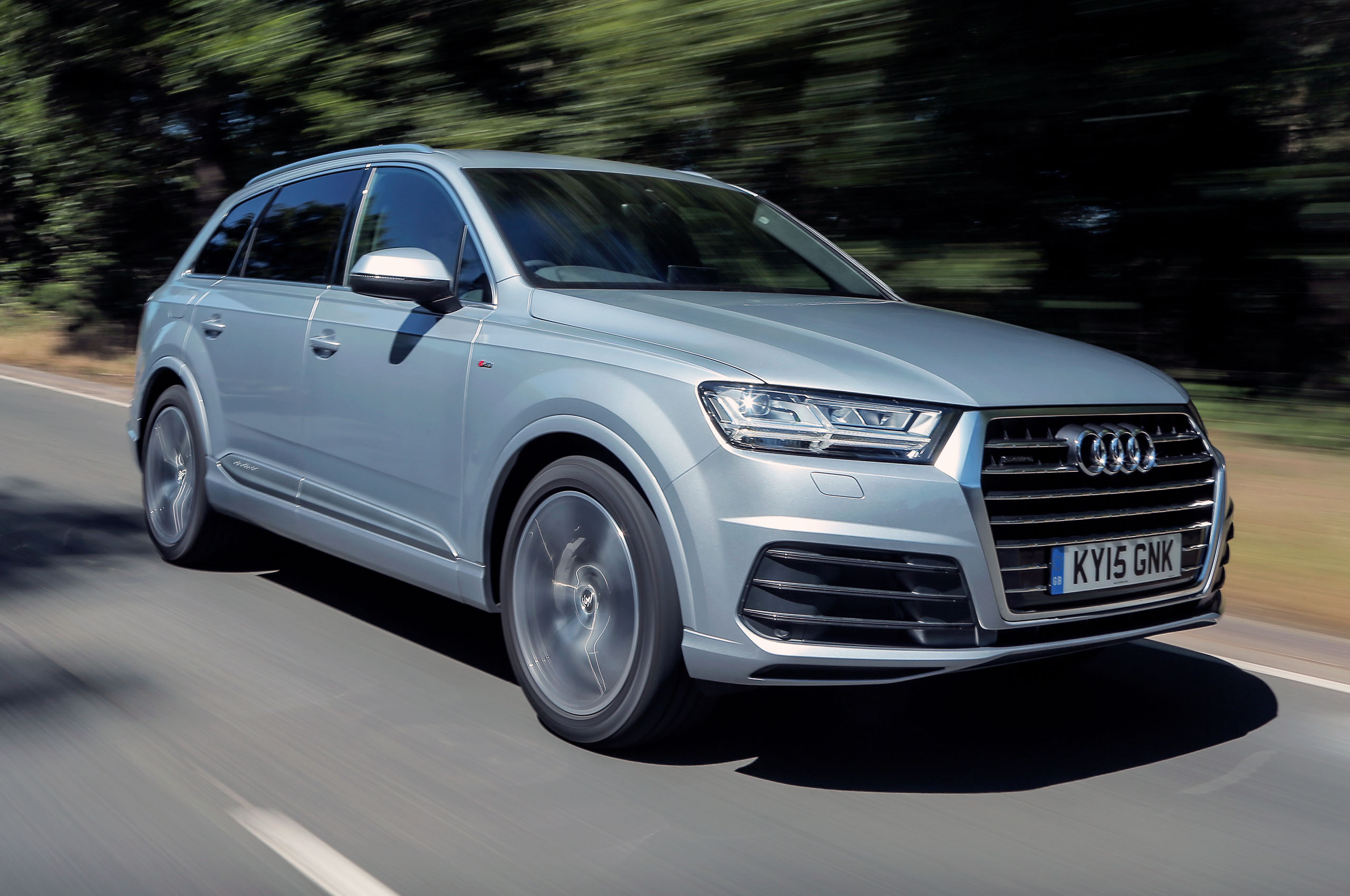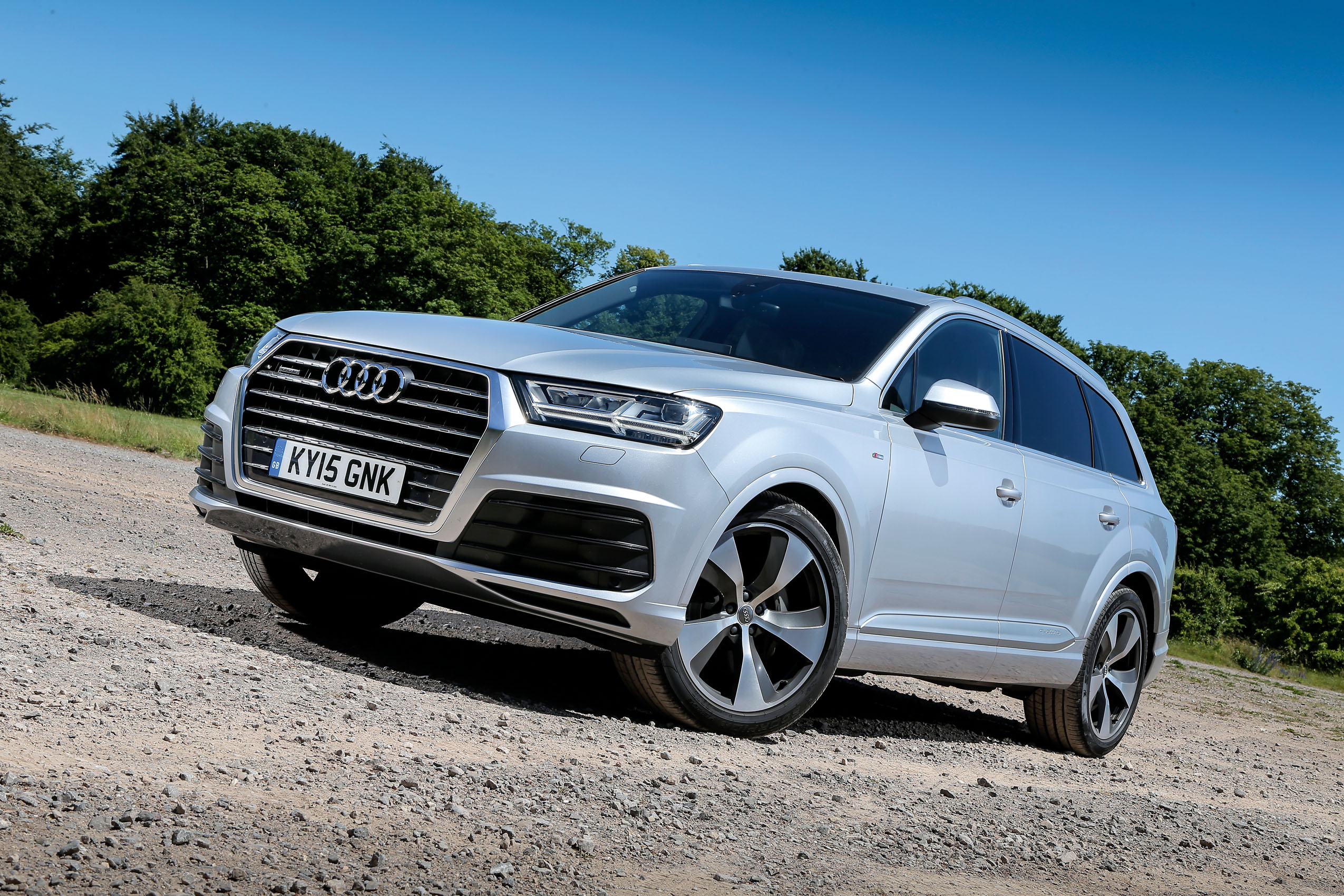Physically smaller this Q7 may be, but its status as a bona fide seven-seater is intact. Few SUVs challenge a large MPV for back-row space, but the big Audi comes close; its generous wheelbase and capacious roofline translate into sufficient leg and head room for a modest-sized adult.
Small children, the most likely occupants of the third row, ought to have no complaint, save perhaps for the height of the seat in front of them and the distance to the windows (neither unusual in the class). Raising the third row from the boot floor is made easy by the assistance of electric motors, although getting there is still a clamber best suited to the young.
Conversely, physically getting the second row out of the way still requires the muscle mass of an adult, despite hydraulic assistance. Seats up, there’s room for a few shopping bags. Flatten them and there’s a very competitive 770 litres.
The second row has three individual seats, which, in contrast to the rearmost two, all slide fore and aft. Once lowered, there’s a fridge-freezer-swallowing 1955 litres.
It’s a model of practicality, then. For front-seat occupants, it’s a very smart conveyor of modern luxury, too. Land Rover and Volvo have set the cabin standard here recently, but Audi’s interior sensibilities are easily up to the challenge.
Its preference for brushed metal (or the appearance of it), sweeping lines, supreme fit and finish and an extraordinary confidence with geometric forms serve it well here.
With some helpful options fitted, there isn’t a surface or item of switchgear that doesn’t commend itself to the touch, and Audi’s integration of technology as part of the experience is possibly unparalleled in the mainstream.
So it’s surprising that its virtual cockpit system (where the infotainment menus migrate to the instrument cluster) seems a shade less effective than it does in Audi’s saloons and sports cars, the Q7’s higher driving position placing it further from your natural line of sight.
Still, opting to have the virtual cockpit does make you feel like an Airbus A380 pilot – and we fail to see how that can be a bad thing.
Helpfully, there are only two trims to choose from for the Q7, and even the entry-level models are stuffed full of equipment, such as adaptive xenon headlights, 8.3in Audi MMI infotainment with sat nav, Bluetooth, smartphone mirroring, DAB, dual-zone climate control, and electrically adjustable and heated front seats. Upgrade to S-line and luxuries such as LED headlights, four-zone climate control and leather/Alcantara seats are all included.
The SQ7 behemoth gets a reversing camera, adaptive air suspension, a quad exhaust plus Audi's 12.3in Virtual Cockpit included in the package, while the Q7 e-tron gets a load of energy conserving technology including brake regeneration, a fully electric mode and three-zone climate control.



